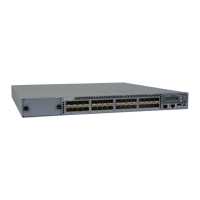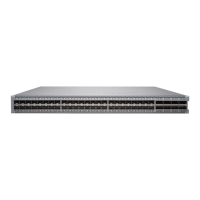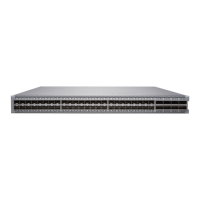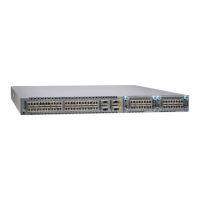•
Cross-head screwdriver (provided in the uplink module kit)
To install an uplink module in the switch (see Figure 58 on page 217):
1. Attach the electrostatic discharge (ESD) grounding strap to your bare wrist, and
connect the strap to the ESD point on the chassis.
If a grounding strap is not available, hold the uplink module in its antistatic bag in one
hand and touch the exposed, bare metal of the switch with the other hand to ground
yourself and the component.
2. Loosen the screws that secure the flip-up door covering the empty uplink module slot
on the front panel of the switch by using the cross-head screwdriver, flip the door
upward, and remove the blanking panel covering the empty uplink module slot.
NOTE: If you are removing an uplink module and installing another uplink
module, wait for at least 10 seconds after removing the uplink module
before installing the new or the same uplink module. If you do not wait for
at least 10 seconds, the interfaces on the uplink module might not come
up.
3. Taking care not to touch module components, pins, leads, or solder connections,
remove the uplink module from its bag.
CAUTION: Before you slide the uplink module into the slot on the switch
chassis,ensure the uplinkmoduleis alignedcorrectly. Misalignment might
cause the pins to bend, making the uplink module unusable.
4. Using both hands, place the module in the empty slot and slide it in gently until it is
fully seated.
5. Flip the door down and tighten the screws by using the cross-head screwdriver.
NOTE: If the switch does not detect the uplink module, see “Troubleshooting
Virtual Chassis Port Connectivity on an EX4200 Switch” on page 262.
Copyright © 2015, Juniper Networks, Inc.216
EX4200 Switch Hardware Guide

